
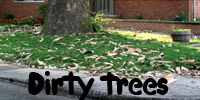
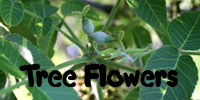
|
Dirty trees
Honey-locust, showy catalpa,
shagbark hickory, and red oak
Honey-locust (Gleditsia triacanthos,
family Fabaceae) in its native condition is a tree that can
offend in many ways. Its trunk and branches are beset with
dangerous
thorns, and it drops flat belt-like pods on the ground. But
the thornless, podless culivated varieties have one big
advantage for landscaping: the compound leaves have tiny leaflets that
just dry up and blow away. But these mainly male trees produce abundant
flowers in catkins that carpet the ground in places where honey-locust
is abundant.
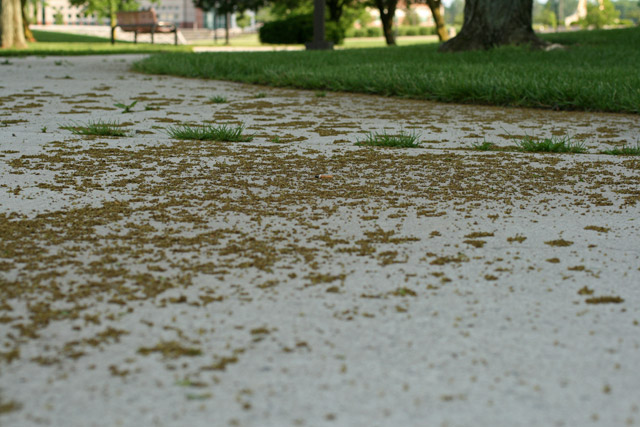
Honey-locust flowers on the ground, June 6, 2008, OSU Marion Campus.
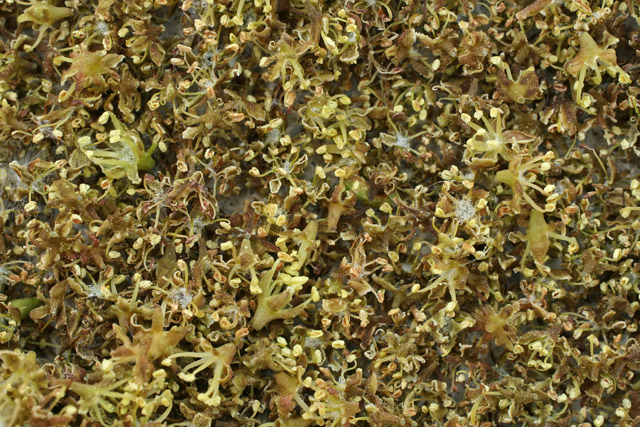
Honey-locust flowers on the ground, June 6, 2008, OSU Marion Campus.
A street tree with showy, hermaphroditic,
insect-pollinated flowers that produces massive flower diplays in early
June is showy catalpa (Catalpa speciosa, family Bignoniaceae).
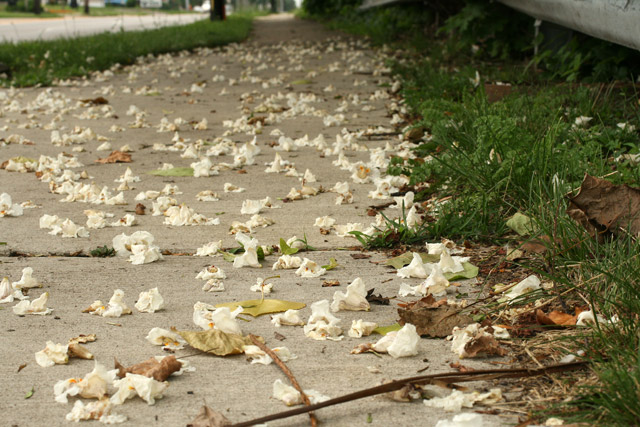
Catalpa flowers June 7, 2008, Columbus, OH.
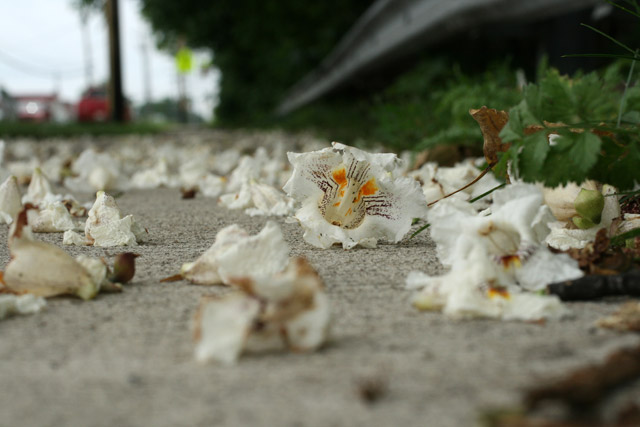
Catalpa flowers June 7, 2008, Columbus, OH
Some nut trees drop a lot of nuts on the ground. The various species of hickory (Carya, family Juglandaceae) are pretty prolific. Here's shagbark hickory (C. ovata) at the edge of a woods.
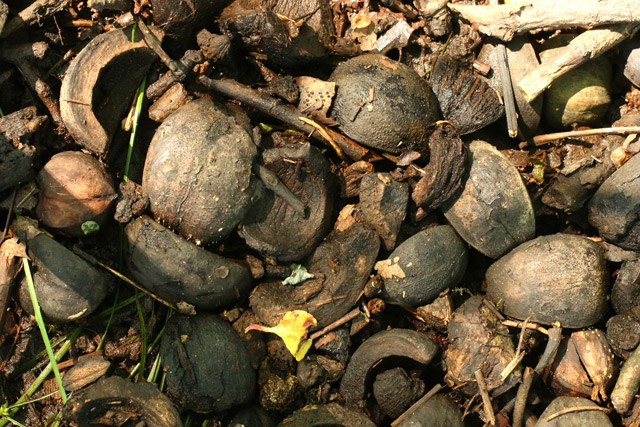
Shagbark hickory nuts and husks, June 6, 2008, Pleasant Towship Park, Marion County, OH.
This hickory tree, incidentally, was the
last in a line of trees used to support a wire fence. Apparently
it was stapled to the tree many years ago, and the tree
has overgrown the wire fence. It looks uncomfortable!
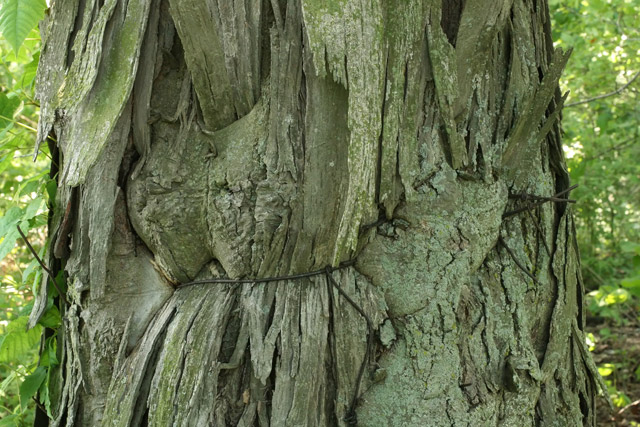
Shagbarg hickory that "ate" a fence, June 6, 2008, Pleasant Towship Park, Marion County, OH.
Squirrels don't get all the acorns. A red oak (Quercus rubra) deposited these and many more on a roadside in Delaware, Ohio.
Red oak acorns, February 26, 2006, Home Rd., Delaware, OH
"Dirty trees" might be a nuisance at
times, but that's a small price to pay for the fascinating glimpse they
provide into the world of plant adaptations. Carbon sequestration is
good too!
|

